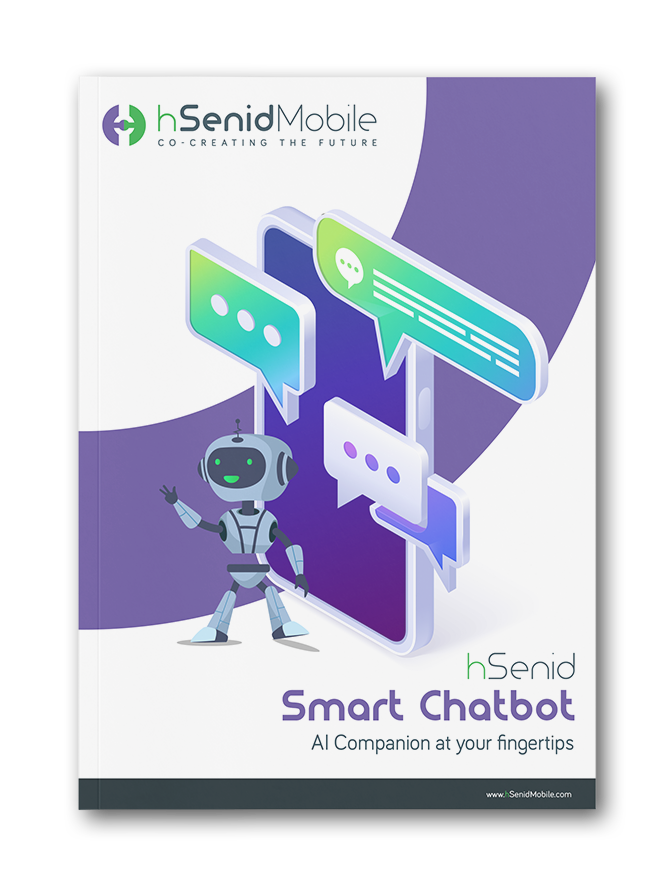As technology continues to evolve at lightning speed, enterprises are constantly seeking innovative ways to enhance customer engagement, streamline operations, and boost overall efficiency. One such innovation that has garnered significant attention is the AI-enabled chatbot. These intelligent virtual assistants are designed to handle a multitude of tasks, from answering customer queries to providing personalized recommendations, thereby improving the user experience and reducing operational costs.
The value and importance of smart chatbots for enterprises cannot be overstated. They offer round-the-clock availability, ensuring that customers receive immediate assistance regardless of time zones. By automating routine inquiries, chatbots free up human agents to focus on more complex and high-value tasks, ultimately driving productivity and customer satisfaction. Moreover, with advancements in artificial intelligence (AI) and natural language processing (NLP), modern chatbots are becoming increasingly adept at understanding and responding to user intent with greater accuracy and context awareness.
However, despite their potential, integrating these chatbots into an enterprise environment comes with its own set of challenges. Understanding and addressing these challenges is crucial for a successful deployment.
Key considerations include:
Key challenges in NLP include:
Strategies to mitigate this issue include:
Considerations for multilingual support include:
The value and importance of smart chatbots for enterprises cannot be overstated. They offer round-the-clock availability, ensuring that customers receive immediate assistance regardless of time zones. By automating routine inquiries, chatbots free up human agents to focus on more complex and high-value tasks, ultimately driving productivity and customer satisfaction. Moreover, with advancements in artificial intelligence (AI) and natural language processing (NLP), modern chatbots are becoming increasingly adept at understanding and responding to user intent with greater accuracy and context awareness.
However, despite their potential, integrating these chatbots into an enterprise environment comes with its own set of challenges. Understanding and addressing these challenges is crucial for a successful deployment.
Integration problems
One of the primary challenges enterprises encounter is integrating chatbots with existing systems and workflows. Enterprises often have complex IT infrastructures comprising various legacy systems, customer relationship management (CRM) platforms, and other business applications. Ensuring that the chatbot can seamlessly interact with these systems requires meticulous planning and technical expertise.Key considerations include:
- Data consistency Ensuring that the chatbot has access to up-to-date and accurate information across all integrated systems.
- API Compatibility Developing or utilizing APIs that enable smooth communication between the chatbot and existing platforms.
- Security Maintaining robust security protocols to protect sensitive data during interactions and integrations.
NLP limitations
While NLP technologies have advanced significantly, they are not without limitations. Chatbots rely on NLP to understand and process human language, but this can be challenging due to the nuances, slang, and variations in human speech.Key challenges in NLP include:
- Ambiguity Human language is often ambiguous, with words and phrases having multiple meanings based on context.
- Accents and dialects Variations in speech patterns can affect the chatbot’s ability to accurately interpret user input.
- Context retention Maintaining context across multiple interactions is needed in order to provide coherent and relevant responses.
Inability to handle complex queries
Despite being designed to assist with a wide range of tasks, chatbots may struggle with handling complex queries that require deep understanding, multi-step problem-solving, or specialized knowledge. This can lead to user frustration and decreased satisfaction.Strategies to mitigate this issue include:
- Escalation protocols Implementing clear escalation paths where the chatbot can seamlessly transfer complex queries to human agents.
- Accents and dialects Regularly updating the chatbot’s knowledge base and training it on a broader range of scenarios to improve its capabilities.
- Enhanced algorithms Developing more sophisticated algorithms to better interpret and resolve intricate queries.
Lack of multilingual support
Enterprises with a global customer base need chatbots that can communicate effectively in multiple languages. However, developing and maintaining a multilingual chatbot presents several challenges.Considerations for multilingual support include:
- Translation accuracy Ensuring that translations are accurate and contextually appropriate.
- Cultural sensitivity Regularly updating the chatbot’s knowledge base and training it on a broader range of scenarios to improve its capabilities.
- Enhanced algorithms Allocating sufficient resources for developing and maintaining language models for each supported language.









